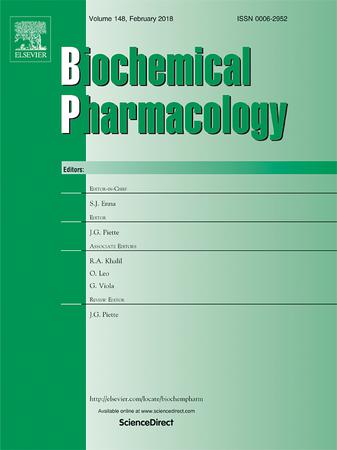E3 ubiquitin ligases and their therapeutic potential in disease Management
IF 5.3
2区 医学
Q1 PHARMACOLOGY & PHARMACY
引用次数: 0
Abstract
Ubiquitination is a vital post-translational modification that regulates protein stability and various cellular processes through the addition of ubiquitin molecules. Central to this process are E3 ubiquitin ligases, which determine the specificity of ubiquitination by coordinating the attachment of ubiquitin to target proteins, influencing their degradation, localization, and activity. E3 ubiquitin ligases are involved in numerous cellular pathways, including DNA repair, cell proliferation, and immune responses. Dysregulation of E3 ubiquitin ligases is often associated with cancer, contributing to tumor progression and resistance to therapies. The development of targeted protein degraders, such as proteolysis-targeting chimeras (PROTACs), represents a significant advancement in drug discovery, leveraging the specificity of E3 ubiquitin ligases to selectively eliminate pathogenic proteins. However, challenges remain in translating this knowledge into effective therapies, including issues related to tissue-specific targeting and off-target effects. The limitations also include a limited understanding of ligase-substrate interactions that includes both the identification of novel E3 ligases and their substrates, as well as understanding the dynamic, context-dependent nature of these interactions, which can vary across tissue types or disease states This review emphasizes the therapeutic potential of E3 ubiquitin ligases, exploring their diverse roles in disease, their contribution to targeted degradation strategies while highlighting the need for further research to overcome current limitations and enhance therapeutic efficacy.

E3泛素连接酶及其在疾病管理中的治疗潜力。
泛素化是一种重要的翻译后修饰,通过添加泛素分子来调节蛋白质稳定性和各种细胞过程。这一过程的核心是E3泛素连接酶,它通过协调泛素与靶蛋白的附着,影响其降解、定位和活性来决定泛素化的特异性。E3泛素连接酶参与多种细胞途径,包括DNA修复、细胞增殖和免疫反应。E3泛素连接酶的失调通常与癌症有关,有助于肿瘤的进展和对治疗的抵抗。靶向蛋白降解物的发展,如蛋白水解靶向嵌合体(PROTACs),代表了药物发现的重大进步,利用E3泛素连接酶的特异性来选择性地消除致病性蛋白。然而,将这些知识转化为有效的治疗方法仍然存在挑战,包括与组织特异性靶向和脱靶效应相关的问题。这些局限性还包括对连接酶-底物相互作用的有限理解,包括对新型E3连接酶及其底物的鉴定,以及对这些相互作用的动态、环境依赖性质的理解,这些相互作用可能因组织类型或疾病状态而异。它们对靶向降解策略的贡献,同时强调了进一步研究以克服当前限制和提高治疗效果的必要性。
本文章由计算机程序翻译,如有差异,请以英文原文为准。
求助全文
约1分钟内获得全文
求助全文
来源期刊

Biochemical pharmacology
医学-药学
CiteScore
10.30
自引率
1.70%
发文量
420
审稿时长
17 days
期刊介绍:
Biochemical Pharmacology publishes original research findings, Commentaries and review articles related to the elucidation of cellular and tissue function(s) at the biochemical and molecular levels, the modification of cellular phenotype(s) by genetic, transcriptional/translational or drug/compound-induced modifications, as well as the pharmacodynamics and pharmacokinetics of xenobiotics and drugs, the latter including both small molecules and biologics.
The journal''s target audience includes scientists engaged in the identification and study of the mechanisms of action of xenobiotics, biologics and drugs and in the drug discovery and development process.
All areas of cellular biology and cellular, tissue/organ and whole animal pharmacology fall within the scope of the journal. Drug classes covered include anti-infectives, anti-inflammatory agents, chemotherapeutics, cardiovascular, endocrinological, immunological, metabolic, neurological and psychiatric drugs, as well as research on drug metabolism and kinetics. While medicinal chemistry is a topic of complimentary interest, manuscripts in this area must contain sufficient biological data to characterize pharmacologically the compounds reported. Submissions describing work focused predominately on chemical synthesis and molecular modeling will not be considered for review.
While particular emphasis is placed on reporting the results of molecular and biochemical studies, research involving the use of tissue and animal models of human pathophysiology and toxicology is of interest to the extent that it helps define drug mechanisms of action, safety and efficacy.
 求助内容:
求助内容: 应助结果提醒方式:
应助结果提醒方式:


